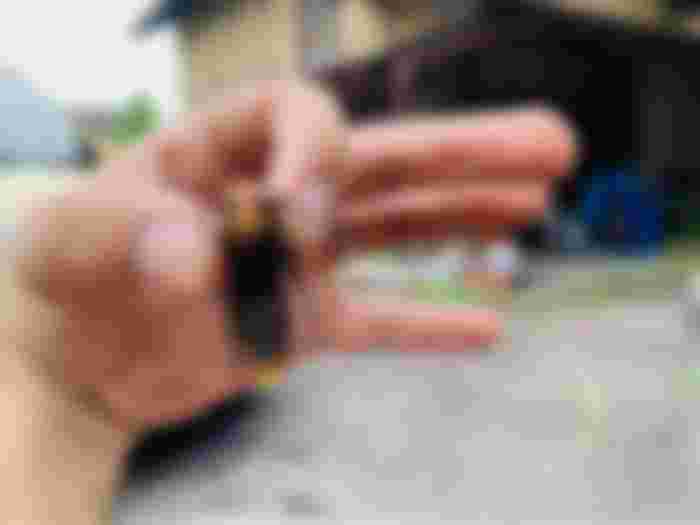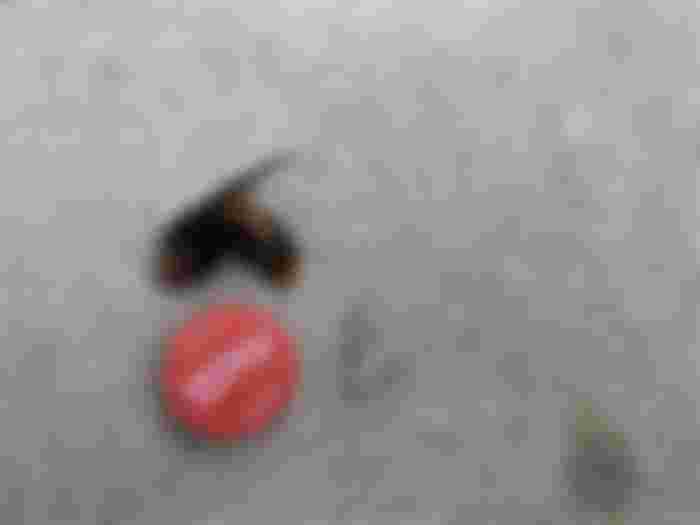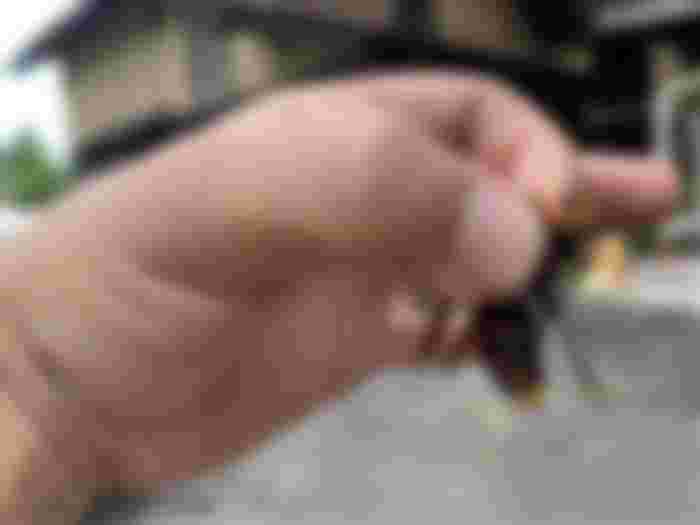note: this piece of content appears exclusively on read.cash and hive.blog

Asian Giant Hornets: is the 'murder' rap justified?
They certainly don't look too friendly, but there is a bit of myth and exaggeration floating around about these guys, online.
They are indeed potentially deadly when encountered in mass, or to people with allergies, and the Asian Giant Hornet sting does kill multiple people every year in Asia. Or leaves them with skin looking like it's been riddled with bullet holes. Usually, these highly dangerous encounters are a result of someone getting too close to a nest.
The aggressive and brightly colored marauders of honeybees and other insects have become infamous globally in recent years, without sightings in countries the species is not native to, such as the United States. And while it's typical American style to have fun and make up kick-ass nicknames for things (not opposed to this really, myself, and secretly embrace it) the case of the "murder hornet" isn't really as cut and dry or "extreme" as the news media makes it out to be.
Shocking, I know.
These guys are not just flying around outside every day waiting for humans to murder. They're part of nature. That said, and if I can be candid: I do my best to stay the fuck away :)

The notorious "murder hornet" is actually known as "ō-suzume-bachi" in Japan. Literally: "big/giant sparrow bee." The name really isn't much of an exaggeration if you've ever had one buzz your head. And there have been times when I've mistaken small birds in the sky for them.
Think: mini drones or helicopter creatures that make a loud breeze you can actually feel on your face when they pass or hover nearby.
What about the sting?
TheVespa mandarinia — with "mandarin" being a nod to the hornets' orange color — typically live in low mountain foothills and forests. Their nests are dug out in the ground, in pre-existing rodent tunnels, or attached to trees, or in tree roots. This is why if one is not careful, one can easily stumble across a nest. Gives me shivers just thinking about it.
As for the sting, Wikipedia cites a source noting what usually leads to victims dying is anaphylactic shock and organ failure, and that those who did not survive were typically stung upwards of 50 times, with survivors suffering around or under 30 on average.
These stats are likely old, but somewhat dispel the mythical belief that if one of these bad boys (well, girls — the males don't have stingers)... so erm ... somewhat dispel the myth if one of these bad bitches gets ahold of you it is straight to the funeral. Not usually so.
Still, the 1/4-inch stinger is said to feel like a 'hot nail being driven into the skin,' and plenty of venom in each sting means especially those with allergies should be cautious.
In case you did want some nightmare hype, though, here's this nugget from Wikipedia:
Besides using their stingers to inject venom, Asian giant hornets are apparently able to spray venom into a person's eyes under certain circumstances, with one report in 2020 from Japan of long-term damage, though the exact extent of actual visual impairment still remains unassessed.
So they're like flying mini-versions of that fucked up dinosaur that killed 'Newman' in Jurassic Park. Maybe.

My experience
The photos in this post are all my own, with a dead ōsuzumebachi I managed to catch in a red wine trap at my house.
I had originally set up the traps to mitigate nesting around our property where we rent in the countryside near low mountains.
The first year I got many of another variety — the "mini-murder hornet," if you will — known as "ko-gata-suzume-bachi." Literally: "small-type sparrow bee." The small hornets are still big, by the way, but there are marked differences in appearance. Their faces actually look less aggressive, due to softer, more rounded lines in the faceplate.
Truly murder machines? Nah. Just be aware of the dangers.
Most of the time these big sparrow bees, large and small alike, are just going about their business, collecting food and water via insects, flowers, and streams, and don't bother humans. They're a common guest at BBQs, fly into Japanese schools in the summer, and if not provoked generally leave humans alone.
Just be careful walking in forests or low mountain areas. Keep an eye out for activity around tree stumps, nests in trees, or in the ground.
Don't provoke them, by the way. They can spray a pheromone that will bring gangs of their pals to visit if you've been less than cordial. The bees get most aggressive just before they die out, and when food becomes scarce, in the fall.
By the way, about my previous comment regarding the American propensity for nicknaming things in extreme fashion. I stand corrected. I've just learned that Japanese media was referring to them as "satsujin" decades ago. That means...murderer. So there ya go.
What do you think about these interesting creatures? Lemme know in the comments section below, and thanks for reading!
-GWS



How do one know when they are observing scarcity of food, and at a point of aggression, is there away to calm them